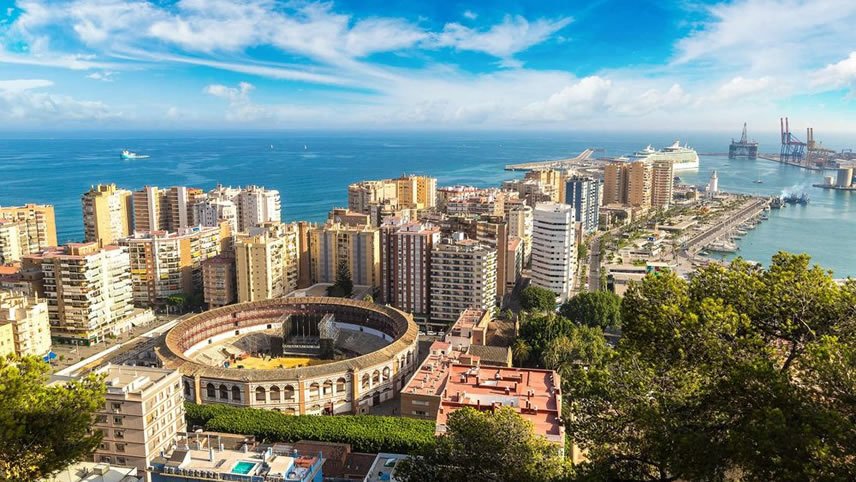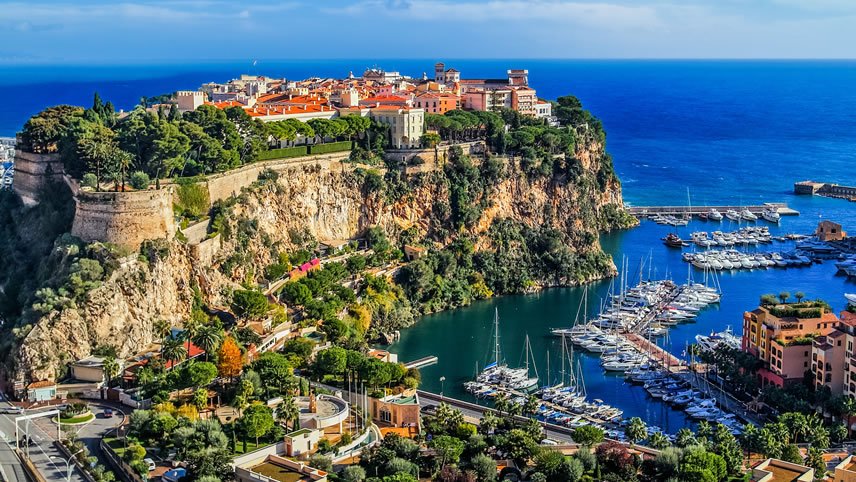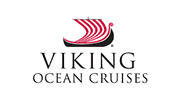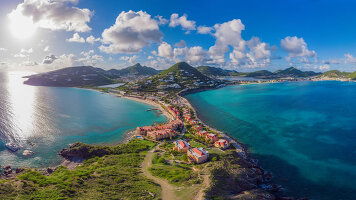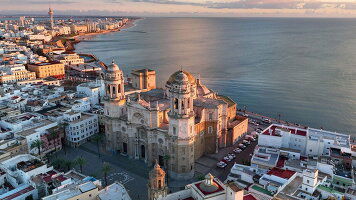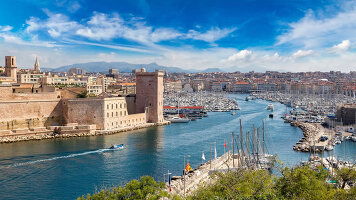Overview
Itinerary
Situated on the north bank of the Thames, Tilbury is steeped in history. The town is most famous as the site of a fortress built by Henry VIII to defend London from invasion by ships coming up the Thames. Upriver, the city is home to iconic power centers—Buckingham Palace, the Houses of Parliament, Westminster Abbey—from which the fate of the British Empire rose and wavered. Today, the city thrives amid a long tradition of arts and architectural innovation—from Shakespeare's Globe Theater to West End musicals, from Tower Bridge to the London Eye.
Portsmouth has been a naval port for centuries and is home to such historic vessels as Henry VIII's Mary Rose and Lord Nelson's HMS Victory. The only island-city in the United Kingdom, Portsmouth has been settled since before the days of the Roman Empire. It grew into a medieval port town; more recently, this was an embarkation port for the D-Day landings and served as headquarters for Dwight D. Eisenhower. The stunning citadel walls of Napoleonic forts greet ships as they approach through the Solent Strait.
About 350 miles long, the English Channel separates southern England from northern France. William the Conqueror crossed these waters to become king of England after the Norman Conquest of 1066. The most triumphant crossing unfolded on D-Day, when Allied troops landed on Normandy's shores. The channel's narrowest point stretches about 20 miles between Dover and Calais. Dover's famed cliffs can be seen from a distance as a long white strip resting on the horizon.
Vigo is steeped in a history that dates back to the Romans. Vikings once saw trade opportunities here and landed briefly on its shores. Soon, Vigo's strategic importance was recognized throughout Europe, resulting in raids by English privateer Francis Drake. Today, Vigo is one of the largest cities in Galicia, Spain's autonomous northwestern region that boasts a rich farming and fishing heritage. The city's markets still overflow with seafood and all the ingredients locals need to prepare traditional caldo galego, a hearty potato soup made with grelo, or broccoli rabe.
Sail the Atlantic Ocean, divided in half, north to south, by the Mid-Atlantic Ridge. Longer than the Rockies, the Himalayas and the Andes combined, this underwater mountain range is the longest on Earth.
Granada is a splendid canvas of Moorish architecture, rich Andalusian tradition and remarkable history. It was the last stronghold of the Moorish Nasrid dynasty, whose 250-year reign ended during the 1492 reconquest of Spain by Catholic monarchs. The grand Granada Cathedral is a soaring celebration of that victory; its Royal Chapel holds the tombs of Queen Isabel and King Ferdinand, the celebrated pair who oversaw the triumph. Their magnificent fortress-palace, the Alhambra, was long the stronghold of Moors, and so offers a magnificent blend of Islamic and Christian detail.
The charms of Murcia lie in its embrace of its rural pleasures. Surrounded by farmland and fertile huertas, Murcianos are never at a loss for produce freshly plucked from “Europe's orchard.” They, in turn, live by the patient cycle of the harvest, going about their days at a leisurely pace. The Moors founded the city in 825 and introduced a vast irrigation network for crops and for city use. They were expelled by Ferdinand III of Castile in 1243. Murcia province remained a vassal kingdom until 1812 and became an autonomous region of Spain in 1982.
The vibrant city of Barcelona, with its lively culture and inviting outdoor spaces, preserves a rich history. Picturesque medieval lanes wind through the oldest part of the city, the Gothic Quarter, where remnants of the city's Roman wall were uncovered. Its treasures include the neo-Gothic Barcelona Cathedral, the medieval Jewish district of El Call and the Romanesque Church of Santa Maria del Pi.
In the evenings, diners relax in the Royal Plaza at restaurants along the elegant square's perimeter.
Barcelona is steeped in history, with stunning architecture and a rich culture. Mediterranean breezes grace the shore and Catalonia's capital is a feast for the senses. Long strolls on wide boulevards—such as Las Ramblas, the mile-long leafy pedestrian way, and the Passeig de Gràcia, lined with some of Europe's most elegant buildings—set the tone for a city that moves to its own tempo. Native son and famed architect Antoni Gaudí adorned his city with whimsy, whether along fantastical city blocks or with his colossal masterpiece, the towering La Sagrada Família cathedral.
Marseille is rich in historic treasures, nestled between the Mediterranean and rocky hills of limestone. Two 17th-century fortresses dominate the charming Vieux Port, or Old Port, the natural harbor that hosts all manner of watercraft, from sleek elegant yachts to old style fishing vessels. Its picturesque quay is one of the world's most romantic walks, lined with dozens of cafés and shops. Also worth exploring is the city center, graced by La Canebière boulevard. Linger in a café and sample the city's signature bouillabaisse made from freshly caught fish.
The chic city of Monte Carlo in the petite kingdom of Monaco boasts some of the world's most exclusive shopping and a beautiful old port. A fairy-tale aura has settled on this glittering city of the Grimaldi family, perhaps nowhere more elegantly than at the Prince's Palace, where the late American actress-turned-princess Grace Kelly presided with Prince Rainier III. Monte Carlo's medieval quarter perches on “The Rock,” an escarpment at the foot of the Maritime Alps, and offers spectacular views of the Mediterranean and the harbor lined with mega-yachts.
Tuscany is known equally as the cradle of the Renaissance and a center of culinary delights and astounding wines. Throughout this emerald-green countryside dotted with cypress trees, endless delights unfold. Among them is Florence, a living museum of the Renaissance. Brunelleschi's famous Duomo dominates the medieval cityscape—an architectural achievement. Another Tuscan treasure, the Square of Miracles, unfolds in Pisa. Here, a trinity of masterpieces—the Leaning Tower, Pisa Cathedral and Baptistery—comprise some of Europe's finest art and architecture.
For centuries, Rome ruled much of Europe, building a vast empire from the power of emperors. More than 2,500 years of history live in the city's streets. Ancient structures recall those heady days when the cheers of 80,000 spectators roared from the Colosseum, citizens mingled in the Forum and senators asked the gods for guidance at the Pantheon. Along with the Vatican and St. Peter's Basilica, this rich pocket of Italy is one of the world's greatest repositories of history and civilization.
Naples boasts a long history in a stunning seaside setting and has long been a major center of Italian culture. The city was the seat of a powerful independent kingdom for 500 years. So great was its sway that it lured the region's finest architects and artists. In the grand Piazza del Plebiscito, the grand and sweeping public square, the San Francesco di Paola Church flaunts a colonnaded facade reminiscent of the Pantheon in Rome, and the Royal Palace overlooks Neapolitans with statues of all the kings of Naples peering out from alcoves.
Sail the gateway to the Adriatic, marked by the sole of Italy's boot and the western coasts of Albania and Greece.
Corfu has a rich history shaped by conquerors and by royalty seeking tranquility. Corfu's Old Town and Fortress—fashioned by the once powerful Venetian Republic—constitute a UNESCO World Heritage Site. Its narrow warrens lead to one of Europe's largest public squares and a lovely promenade once exclusively reserved for the local aristocracy. Everywhere, magnificent coastal views unfold and scenic byways lead to history-rich enclaves, from the archaeological site of Paleopolis and the stunning Vlacherna Monastery to a former Greek royal villa.
Dubrovnik is a historic jewel, with its spectacular Adriatic setting, 12th-century medieval streets and incredibly preserved structures. So stunning is its Old Town, the playwright George Bernard Shaw famously called it “paradise on Earth.” It is all spectacularly surrounded by a towering medieval wall. Inside, the ancient city's Stradun is lined with authentic stone houses. The peaceful 14th-century Franciscan Monastery and Apothecary, housing the world's oldest working pharmacy and a fine collection of Renaissance paintings, provide insight into the ages.
Built around the Roman Palace of Emperor Diocletian, Split is one of Croatia's oldest cities. Its promenade commands majestic views over a bay and the Adriatic Sea. Despite evidence of Split's origins in the 6th century BC, the city is traditionally considered over 1,700 years old—counting from the construction of the palace. Its well-preserved remains have been seamlessly assimilated into the modern city. An Ethnographic Museum is found at the palace's heart and shops line the passageways of its ancient basement. Diocletian's ancient mausoleum is now a stunning cathedral.
Chioggia is a charming fishing community located at the southern end of the Venetian Lagoon and steeped in age-old seafaring traditions. Its combination of canals, bridges and fishing boats have lent it the nickname “Little Venice.” Lined with shops, bars and restaurants, the main pedestrian street of Corso del Popolo exudes a lively atmosphere amid the aroma of delicious fresh seafood dishes. Chioggia shares a long history of cultural and economic ties with Venice, dating back to the Middle Ages, and is a scenic journey by water taxi from the capital of the Veneto region.
Bid farewell to your fellow guests and journey home. Or spend more time exploring, perhaps joining one of our extensions.
Life Onboard Viking Vesta
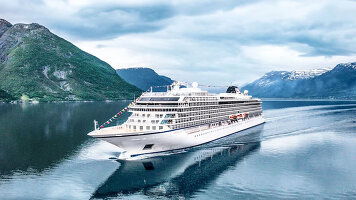
Launched in 2025, Viking Vesta is an all-veranda ship, part of Viking's fleet of award winning, state of the art ships incorporating all the comforts & luxuries you'd expect from Viking. Read more
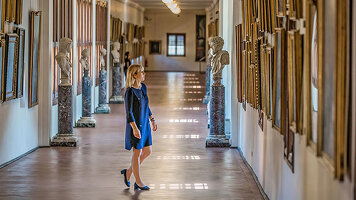
Viking are destination experts. With no casinos or children on board, you can be assured that the focus is firmly on enrichment and education. Read more

After a day of exploration or just to enhance the relaxation of a day at sea, the on-board Spa will leave you feeling recharged and revitalized. Read more
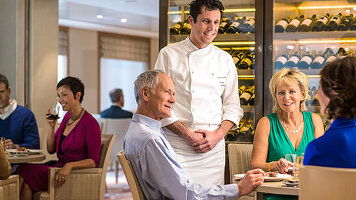
Viking offer eight on board dining options. Beer, wine and soft drinks are available with lunch and dinner at no additional charge of fee. Read more

Viking proudly includes all that you need and nothing you do not. A variety of features and services valued at $200 per person per day are standard inclusions in your cruise. Read more
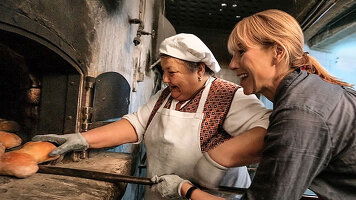
Viking include one complimentary shore excursion in every port of call. Enjoy exclusive entry to cultural treasures and seldom-seen collections around the world. Read more

Trip Reviews (1) Most Recent 'Iberian & Mediterranean Odyssey' Reviews
Brochure
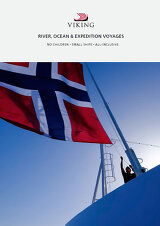
Viking River, Ocean & Expedition Voyages (2025-27)
Availability
 USD
Port charges, taxes and fees included.
USD
Port charges, taxes and fees included.
Viking Cruise $25 Deposits!
Tour & cruises prices are per person. Prices shown have savings applied, are subject to availability and may be withdrawn at any time without notice. Pricing and trip details are correct at this point in time, however are subject to confirmation at the time of booking and are subject to change by Viking. For cruise itineraries, cabin images are sourced from Viking. These should be treated as indicative only. Cabin inclusions, upholsteries and room layout may differ to the image(s) shown depending on the ship selected and your sailing dates.
